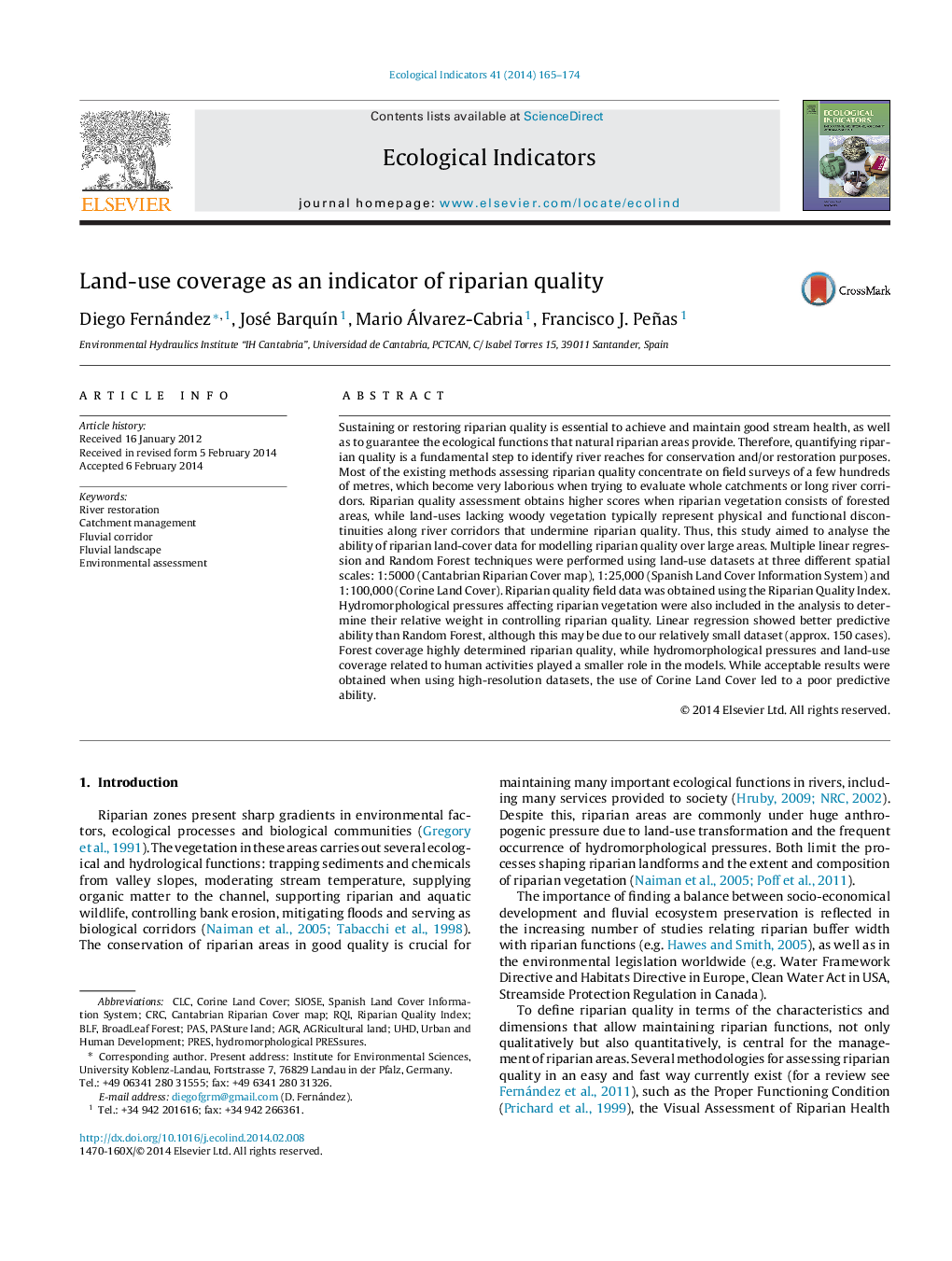| Article ID | Journal | Published Year | Pages | File Type |
|---|---|---|---|---|
| 4373205 | Ecological Indicators | 2014 | 10 Pages |
Abstract
Sustaining or restoring riparian quality is essential to achieve and maintain good stream health, as well as to guarantee the ecological functions that natural riparian areas provide. Therefore, quantifying riparian quality is a fundamental step to identify river reaches for conservation and/or restoration purposes. Most of the existing methods assessing riparian quality concentrate on field surveys of a few hundreds of metres, which become very laborious when trying to evaluate whole catchments or long river corridors. Riparian quality assessment obtains higher scores when riparian vegetation consists of forested areas, while land-uses lacking woody vegetation typically represent physical and functional discontinuities along river corridors that undermine riparian quality. Thus, this study aimed to analyse the ability of riparian land-cover data for modelling riparian quality over large areas. Multiple linear regression and Random Forest techniques were performed using land-use datasets at three different spatial scales: 1:5000 (Cantabrian Riparian Cover map), 1:25,000 (Spanish Land Cover Information System) and 1:100,000 (Corine Land Cover). Riparian quality field data was obtained using the Riparian Quality Index. Hydromorphological pressures affecting riparian vegetation were also included in the analysis to determine their relative weight in controlling riparian quality. Linear regression showed better predictive ability than Random Forest, although this may be due to our relatively small dataset (approx. 150 cases). Forest coverage highly determined riparian quality, while hydromorphological pressures and land-use coverage related to human activities played a smaller role in the models. While acceptable results were obtained when using high-resolution datasets, the use of Corine Land Cover led to a poor predictive ability.
Keywords
Related Topics
Life Sciences
Agricultural and Biological Sciences
Ecology, Evolution, Behavior and Systematics
Authors
Diego Fernández, José BarquÃn, Mario Álvarez-Cabria, Francisco J. Peñas,
